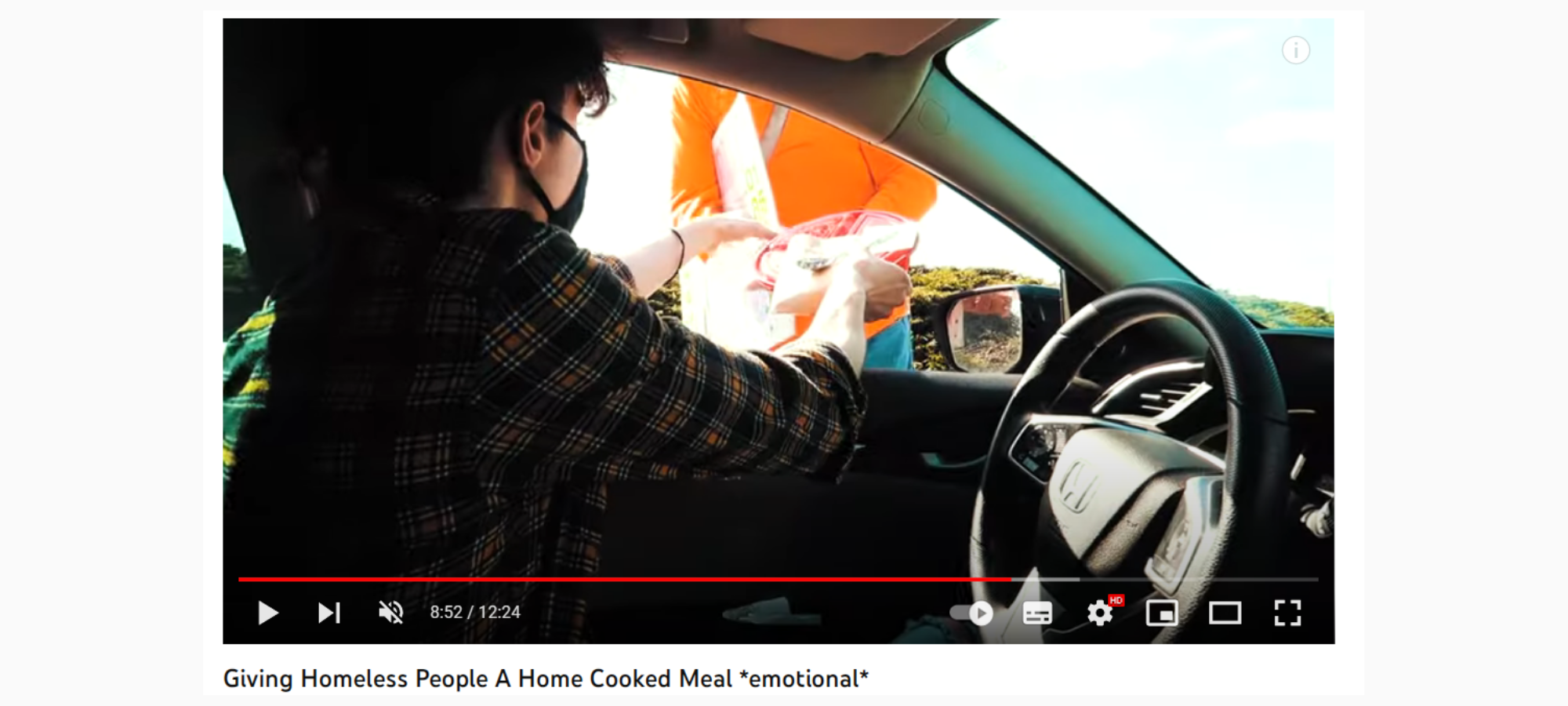
It doesn’t take much scrolling on social media to stumble across homelessness photography and videos.
From ‘heart-warming’ videos of strangers handing out food to grateful people sleeping rough, to serious portraits of those sat on the street begging, this content is impossible to avoid on the internet.
This can be profitable for the poster too. Aside from gaining a positive reputation for doing a good deed, this approach can lead to millions of views, exposing their work globally without any cost.

But what benefits are there for the people experiencing homelessness? A meal may be appreciated but this is a very short-term form of support, and often not without conditions. To be supported by the photographer or influencer, people are often expected to be on camera expressing their thanks.
There’s a lot to unpack here.
Firstly, the person being photographed has a lack of control in this situation as they won’t have access to the footage or a say in how it’s used. Secondly, their need for support at that particular moment might result in a coerced consent that is not freely given.
Additionally, the value of a viral video or photograph can be very high, bringing in thousands of pounds if promoted correctly. Compared to this, one meal with no credit given on the video, seems like a small reward.
Lastly, one of the often-forgotten parts of homelessness is the lack of privacy. With no room of your own, people may feel constantly watched. Being photographed can amplify this. Aside from the stigma this can bring, being recognised as someone experiencing homelessness can affect a person’s relationships and job prospects, leading to damaging outcomes.
Can homelessness photography be used for good?
With all this in mind, when handled correctly, photography can be used as a force for good for people sleeping rough.
1. Consent is key
Before taking photos, be sure to talk to the person and gain their consent. Introduce yourself and explain what you’ll be capturing, where it will go and why. It’s also important to get to know the person you’ll be capturing if they are willing. People sleeping rough often feel invisible and a quick chat could make all the difference.
Of course, if the people facing rough sleeping is uninterested in being photographed (or being photographed in the ways you’ve suggested) it’s key to respect their opinion. Aside from the ethics of this, it could help the person regain trust in a society that has let them down. This small step could mean a lot.
2. Let the person decide how their story is told
Instead of telling someone how you’d like to photograph them, give them suggestions they can pick from or let them lead the shoot. This could make them more comfortable and help them to regain control of their narrative.
This can lead to more creative content while helping to restore confidence. Clearly, this can be a mutually beneficial exchange if handled correctly.
3. Our approach
At The Connection at St. Martin’s, we believe in empowering people and working with them to move away from the streets.
As part of our work, we often ask people we support for their consent on being photographed and/ or recorded. We work hard to make sure this is freely given, fully informed and retractable at any time.
This has taught us that photography can be a force for good within homelessness recovery but only if it is produced respectfully and in partnership with people experiencing homelessness.

